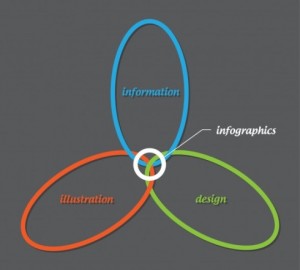Show Me A Picture: Keys to Developing Infographics
Lauren Peek | @treblemaker45 Research suggests that the Internet has lowered people’s attention spans. With the massive amount of information available with the click of a mouse, people expect to digest information with a single glance. Infographics have exploded in popularity because they are designed with important information and presented for short attention spans.
Everyone wants to make infographics these days, but most aren't doing so correctly. Infographics are suppose to inform the audience, not just look nice. They bring value to the customer and tell them something they may not have known before. There are several important keys to developing informative, attention-grabbing infographics.
Words Before you can begin designing an infographic, you have to do your research. Infographics are not an advertisement. You are attempting to convey very important and factual information here. Like with high school and college research papers, use reputable sources. The more accurate your information, they more your audience will trust you in the future.
Your infographic needs to tell a story, including a beginning, middle, and end. The theme of the story needs to be discoverable within 8 seconds of looking at the infographic. Like Twitter, you'll need to condense your information to the most important points. If your facts are compelling, the reader will want to know more and do some research of their own.
If your infographic has time sensitive data, label it. This will help prolong the life of the infographic, especially if there are statistics involved. People will want to know when the information was collected in order to evaluate how relevant it is at the time they are viewing it.
Be aware of other infographics that have already been made, and look at successful examples to see what they are doing successfully.
Design Don’t use strange fonts. Even though visuals are key here, hard-to-read text will quickly make people lose interest. Avoid Comic Sans and other fonts that look like handwriting. Think: what would my professor want to see here? Keep it professional .
Pick your colors wisely. Are you trying to convey a sense of urgency? Or are you just presenting the facts? Do a little bit of research about how colors make people feel and react. Avoid using two shades of the same color. Think of a basic box of crayons. If you’re doing an infographic about a “good” vs. “bad”, color code the groups of information according to their category.
The recommended ratio for graphics to data is 1:1. Pick images that are not only relevant to the story you are telling, but highlight the main points. If someone only has a few seconds to glance over your infographic, the images should tell them what it is about and make them want to come back later to read in-depth.

Last but not least, make your infographic shareable. If your target audience likes your infographic, they will want to share it with others. Allowing them to do this not only spreads your message easily, but will encourage people to do the same in the future.

